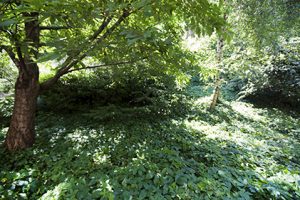Posted on June 22, 2017


With the influx of gypsy moth caterpillars throughout eastern and central Connecticut, the Forestry department of DEEP has reported the maimaiga fungus which develops as a result of wet weather has been reported in several towns across the state, with some early levels resulting in the gypsy moth caterpillars dying off.
The major die-off’s that are expected have not yet been observed but are expected to occur soon as the warmer weather gets underway. Due to a cooler spring, the rate of growth among the gypsy moths decreased and therefore their process of moving down the trees has been pushed back.
As the warmer weather approaches, the larvae will not only increase in size but be more active, moving from the crowns of the trees down into the soil where they will be infected with the fungal spores which will accelerate the spread of the fungus and rate of larval mortality.
Some ways to eliminate the moths are as follows:
- Scrape, remove and destroy egg masses (submerge in a container of soapy water).
- Burlap folded strips wrapped around the tree trunks (when seeking sleep they move down and hide in burlap for protection (can scrape them out and dispose of them every morning).
- Duct tape and tanglefoot (wrap tree with tape and spread tanglefoot around tape with popsicle stick, moths climbing up tree will get stuck and you can dispose of them).
The DEEP forestry division recommends residents who are concerned with the gypsy moth issue and have multiple acres of land take the following precautionary steps to prevent an issue:
- Determine whether or not the local gypsy moth population is in outbreak status or about to be. You can do this by:
- During the late spring and early summer, walking your woods to determine whether or not gypsy moth caterpillars are present and in what numbers. In an outbreak, they will be all over the place, including, in the earlier instars, descending from trees on their webs.
- During the off-season (from mid-summer to late April), walking the woods and looking for gypsy moth egg masses. If there are lots of egg masses, a large number of caterpillars can be expected to hatch the following spring.
- Woodland owners are encouraged to contact a Connecticut Certified Forester if a heavy defoliation has already occurred and a second, heavy defoliation is anticipated.
For information on gypsy moths from the DEEP Forestry division can be found here.
For more detailed information on ways to safely combat the gypsy moth can be found here.
Additional information on Gypsy moths and their habits, lifecycle, impact, etc. can be found here.

